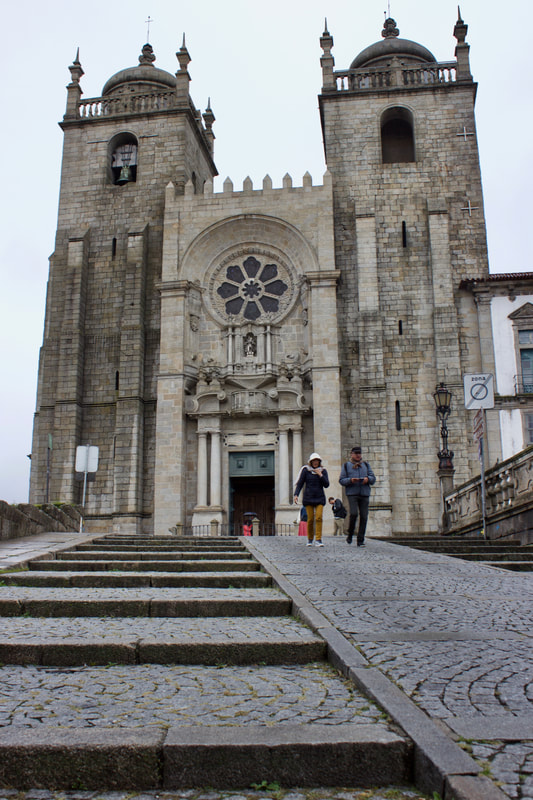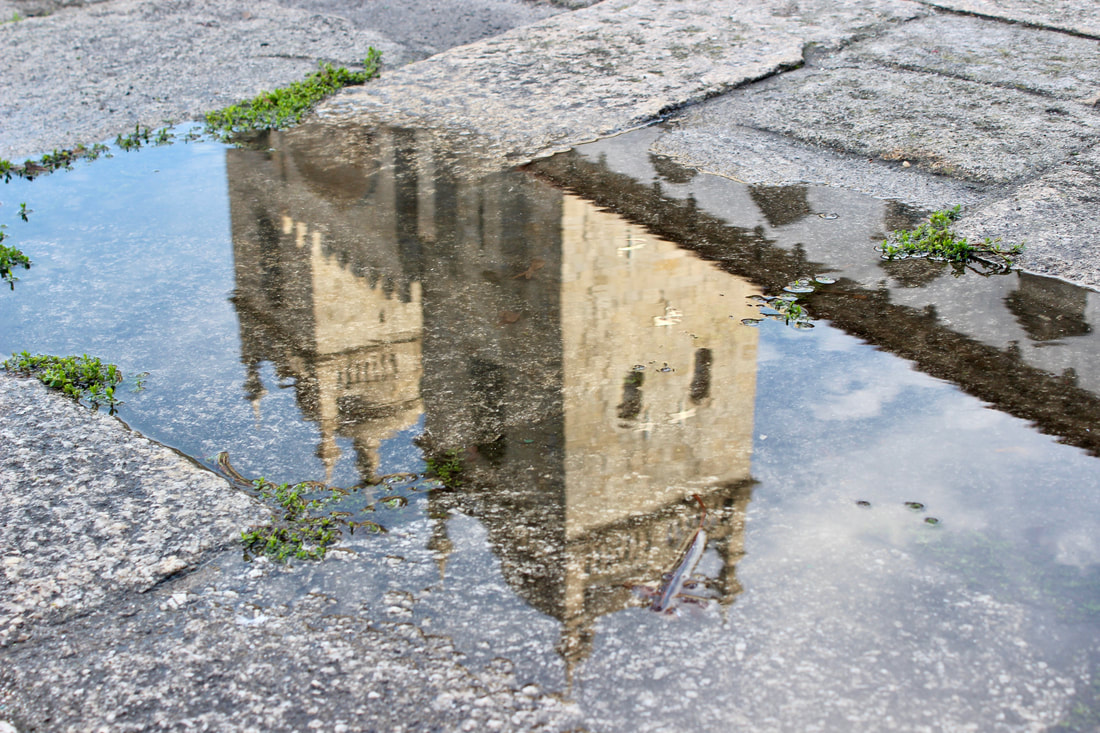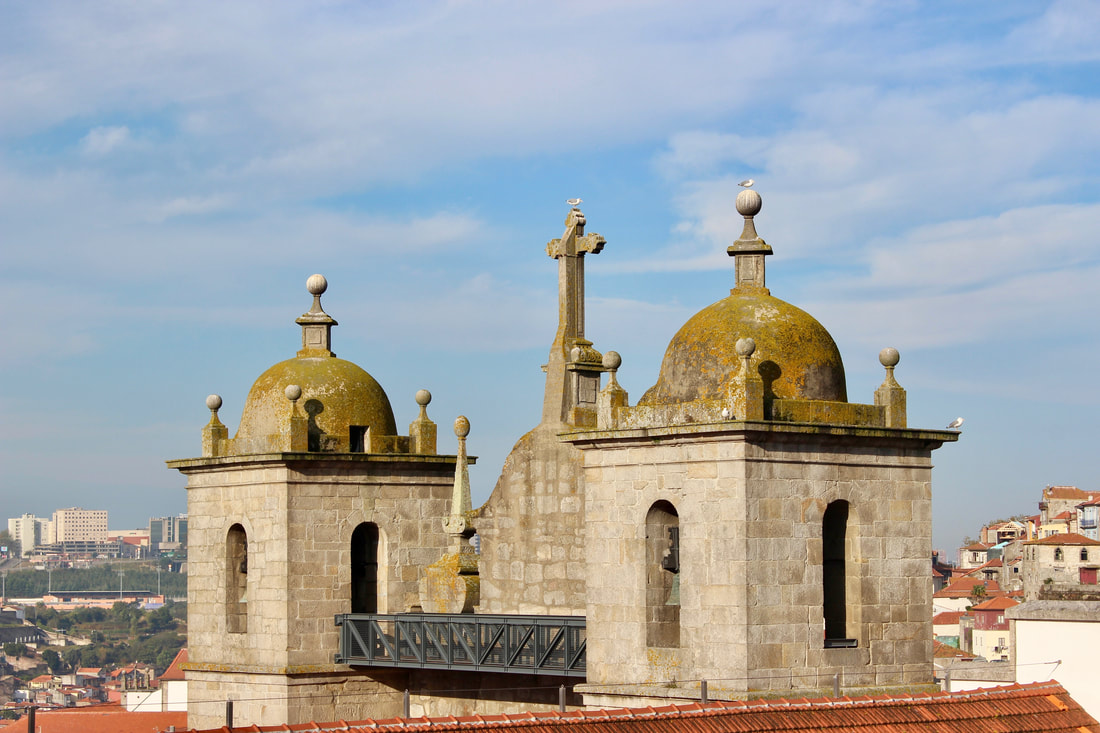Known as Igreja de Santo António dos Congregados, this Catholic church is adjacent to the Sao Bento train station and a short distance to Porto's main cathedral. Named after Saint Anthony, he was a 12th Century saint from Lisbon who was known for his preachings. Built in the 17th Century, locals used a different chapel in 1662 that was the seat of the Confraria de Santo António de Lisboa, but this construction terminated in 1680. The exterior captivates locals and travelers alike with its traditional blue and white tiles depicting scenes from Saint Anthony's life, which ironically also matches the sky. The Baroque facade also features a statue of Saint Anthony.
Sé Cathedral is the most important cathedral and religious building in Porto. This is also the starting point for many pilgrims who will walk from Porto, Portugal to Santiago de Compostela, Spain. Inside, pilgrims purchase their passport and outside many snap photos in front of the church and the arrows pointing in the direction of walking north to Santiago or south to Fatima.
Built on the highest point in Porto, construction began in the 12th Century. Mainly Baroque, the Cathedral features various architectural styles due to getting various "face lifts" throughout the centuries. One interesting fact is that the Cathedral sits on a square, which contains a column in the center. Criminals were once hung from this column.
Entrance into the cathedral is free, but three euros to visit the cloister, a place of the Cathedral's most prized possessions.
The main Porto Cathedral features several lookout points over the city. In the distance, one notices a large spire towering above the rest of the city. This religious place of worship was built between 1754 and 1763 by Nicolau Nasoni. The76-meter tower features six floors and 255 stairs that leads to the top of the tower. At the top, there is a 360-degree, birds-eye view of the city.
The Porto Cathedral features a viewpoint overlooking the Doruro and Ribeira. Here travelers marvel at the towers of the St. Lawrence Church. Known as Convento de São Lourenço, the locals refer to this church as Igreja dos Grilos, meaning Cricket’s Church. This name came about as when the Jesuits settled in Lisbon in the 16th Century they established their headquarters on Rua do Grilo (Cricket Street). The Jesuits congregated to Porto in 1577 to construct a new church. The locals joked about the origins of the priest, naming them Padres Grilos (Cricket Priests). This 16th Century Baroque church also contains pieces of Roman history.
The Carmo and Carmelitas are two churches separated by one of the world's most narrow houses, a place to separate the nuns and the monks. The classical facade looks traditional, but what makes this church unique is the blue and white Portuguese tile on the Carmo side of the building. Constructed in the 18th Century with baroque architecture, the church was used as barracks during the French invasion between 1808-1814.
From the exterior, what looks like an ordinary church is home to something extraordinary once you walk inside the 13th Century church. Construction began in 1244, and throughout the years of reconstruction architects integrated Gothic and Baroque designs. Covered in gold, this maybe one of the most precious churches in all of Europe. The museum housed in the catacombs features ancient remains of past monasteries.
Church of Santa Clara
Located near the Fernandina Wall, and the Guindais Funicular, this old-stone church is a Baroque masterpiece. Construction began in the 15th Century, with an original Gothic facade. The Renaissance era made several changes including wood work and a portal.
Want to discover more about Porto? Check out my popular, 9 Historical Attractions You Can't Miss in Porto Blog, or follow my Camino de Santiago journey where I started in Porto on Youtube.
This Lemon Tree article is now featured on GPSmyCity. To download this article for offline reading or travel directions to the attractions highlighted in this article, go to 7 Most Notable Churches and Cathedrals in Porto, Portugal.











 RSS Feed
RSS Feed